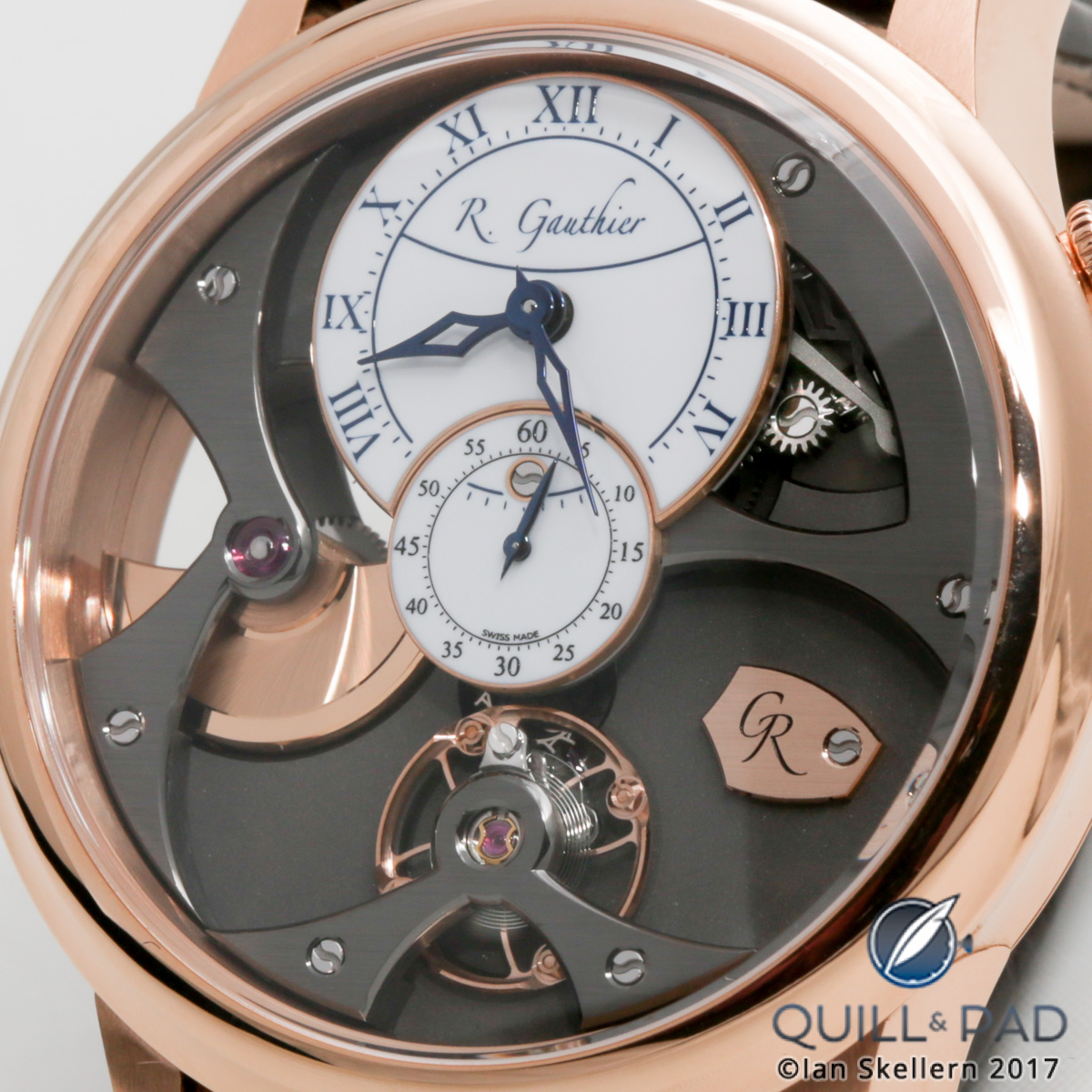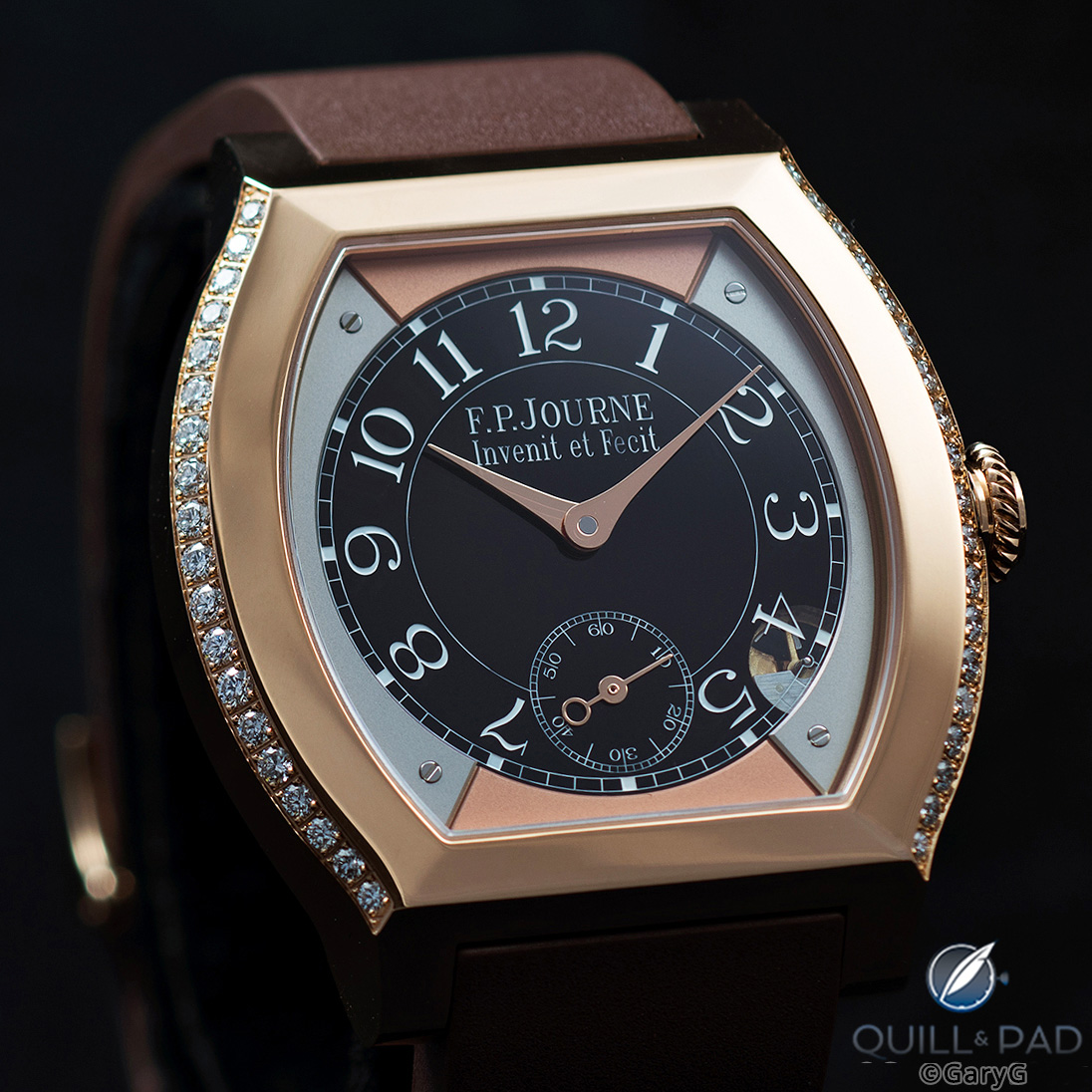
“Because I’m all about that case, about that case, no movement . . . ” with apologies to Meghan Trainor and Kevin Kadish, “All About That Bass.”
Can you recall the last time that you read a review of a newly introduced watch and the first few paragraphs of the article were about the case?
Yeah – thought not.
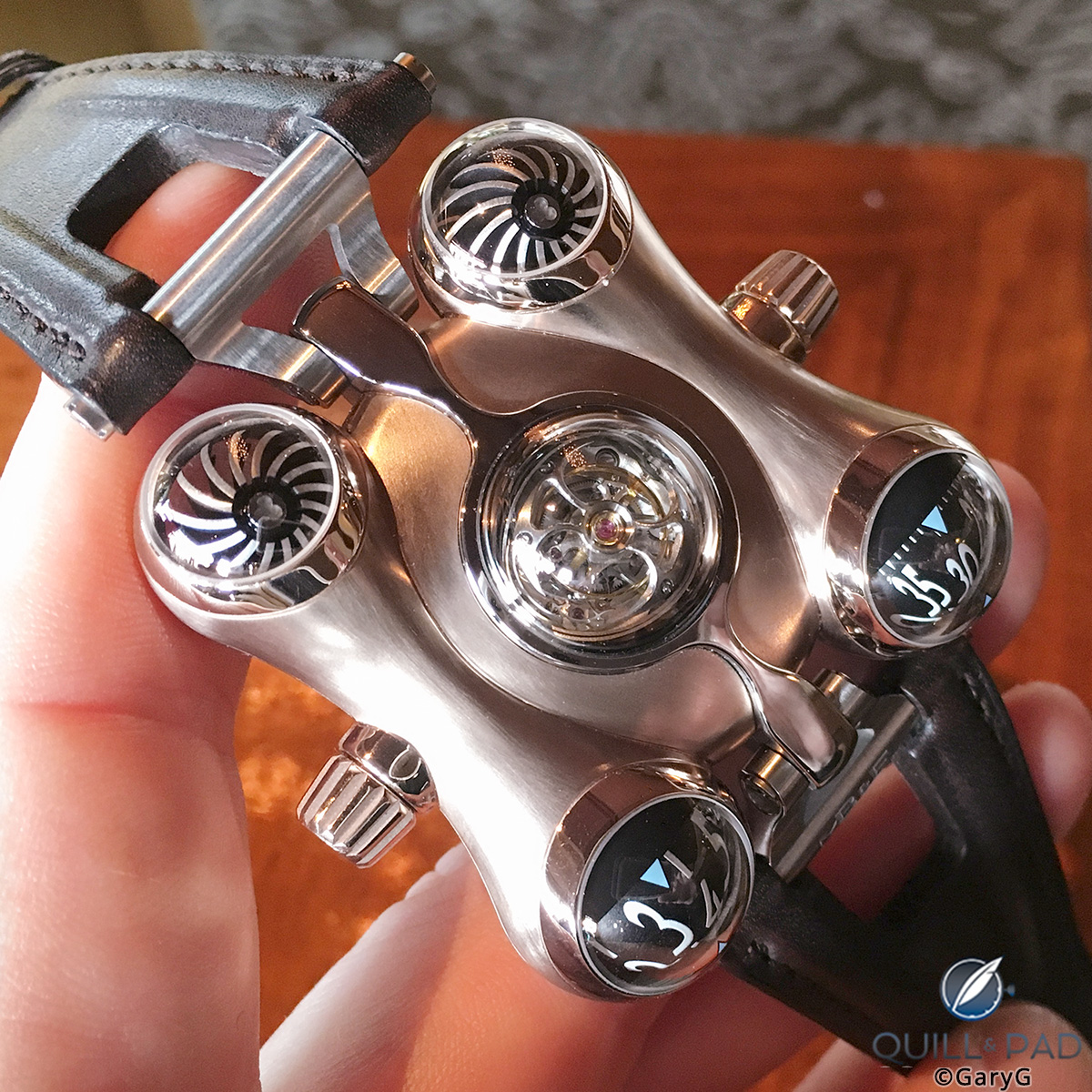
Case in point: HM6 Space Pirate from Max Büsser and Friends, MB&F
There are some watches out there, including the MB&F HM6 Space Pirate, that invite commentary on their physical forms.
However, it seems that most watch overviews (including my own) begin with deep consideration given to the mechanical features of the piece, the appearance of the dial, and the intricacies and finishing of the movement before turning grudgingly to the outer layer that protects all of the other bits and, if done well, makes an immense contribution to the appeal of the watch.
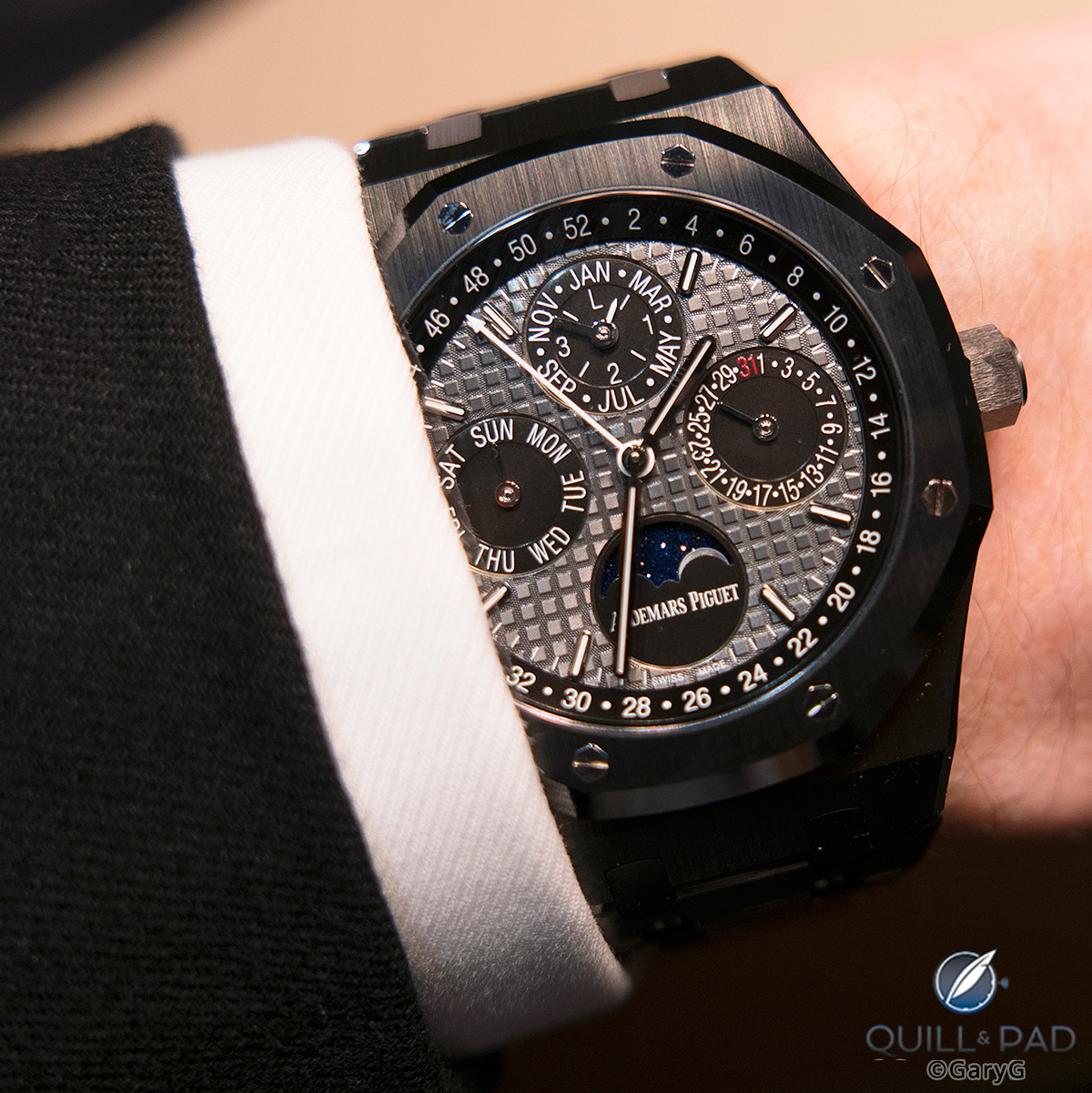
Audemars Piguet Royal Oak Ceramic Perpetual Calendar, photographed at SIHH 2017
At the extreme, case design can define the appeal of an entire range of watches: witness the Royal Oak series from Audemars Piguet, which year after year trounces the sales numbers of the brand’s other lines, including many lovely presentations of exactly the same inner workings in the more traditional Jules Audemars case.
What makes a case distinctive?
As I assembled my personal picks for a sampling of “interesting” watch cases among those I have photographed over the past few years, I began to see some patterns: the pieces that made the cut were distinctive on one or more of five dimensions: form, design, fabrication, function, and decoration.
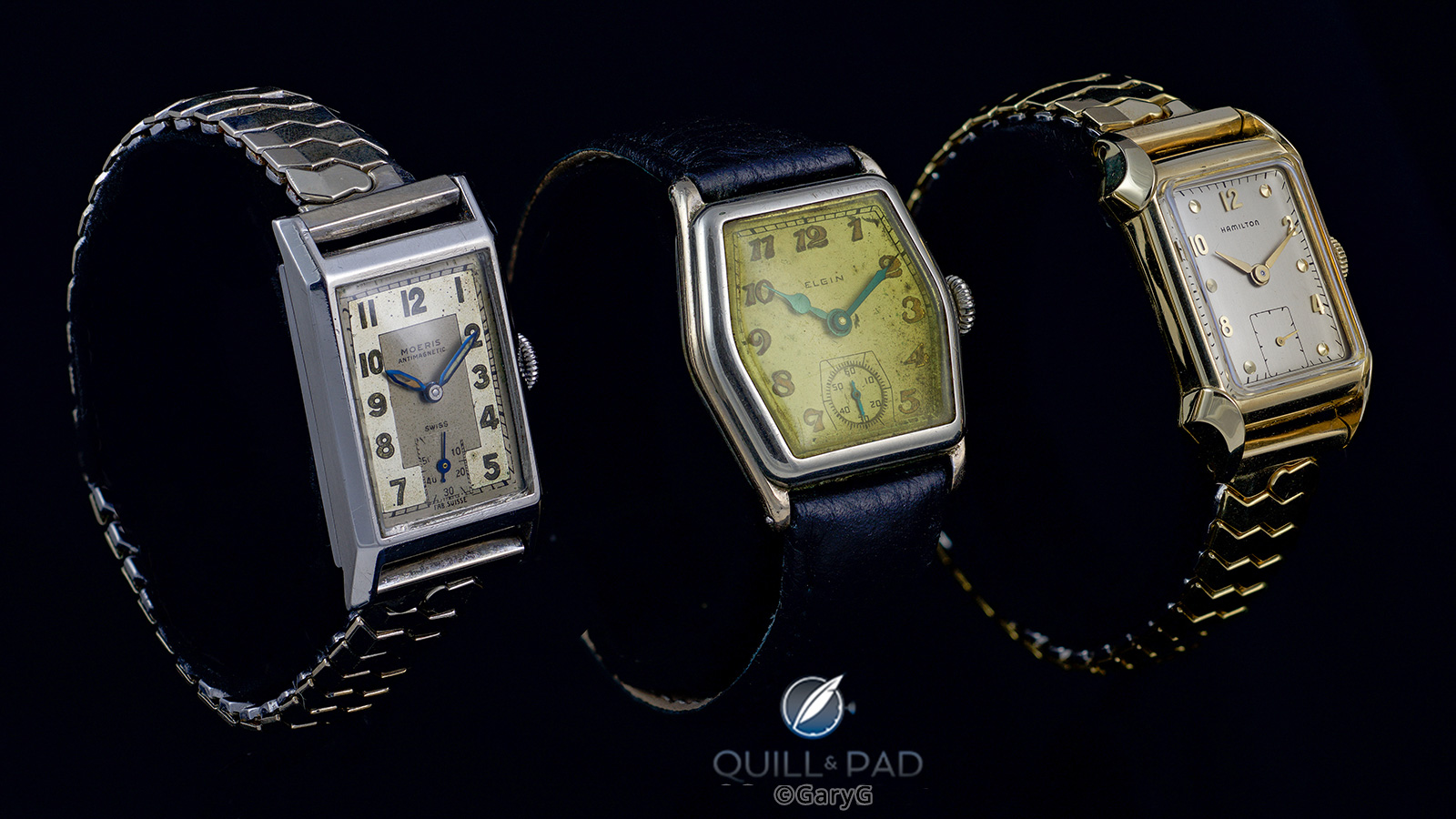
Shapes from the past: form watches from the author’s grandfather
Let’s start with form, which I’ll define for our purposes here to mean the physical shape of the case or major elements such as the bezel. The Royal Oak fits into this category for me, as does its likewise Genta-designed relative, the Patek Philippe Nautilus.
And so do several of the watches that I inherited from my grandfather (see My Grandfather, The Watch Collector), which may help to explain my interest in this topic, as well as the distinctive shape of my own first-ever watch purchase might (see A Watch Collection Begins: GaryG And His Bucherer Chronometer), shown in the photo below.
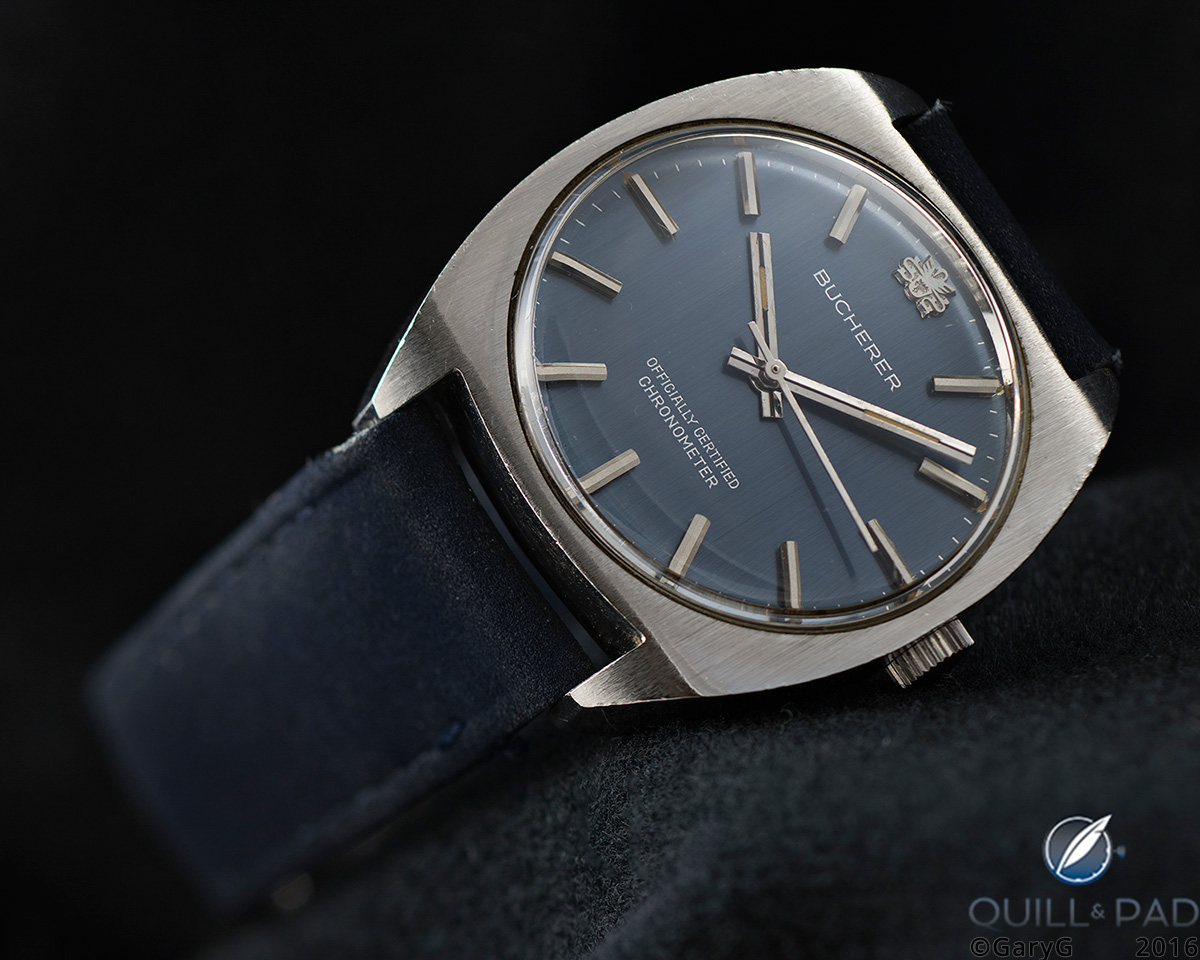
GaryG’s first watch purchase, a Bucherer chronometer
A more recent example in the form category is MrsG’s F.P. Journe Elégante with its registered “tortue plate” case shape.
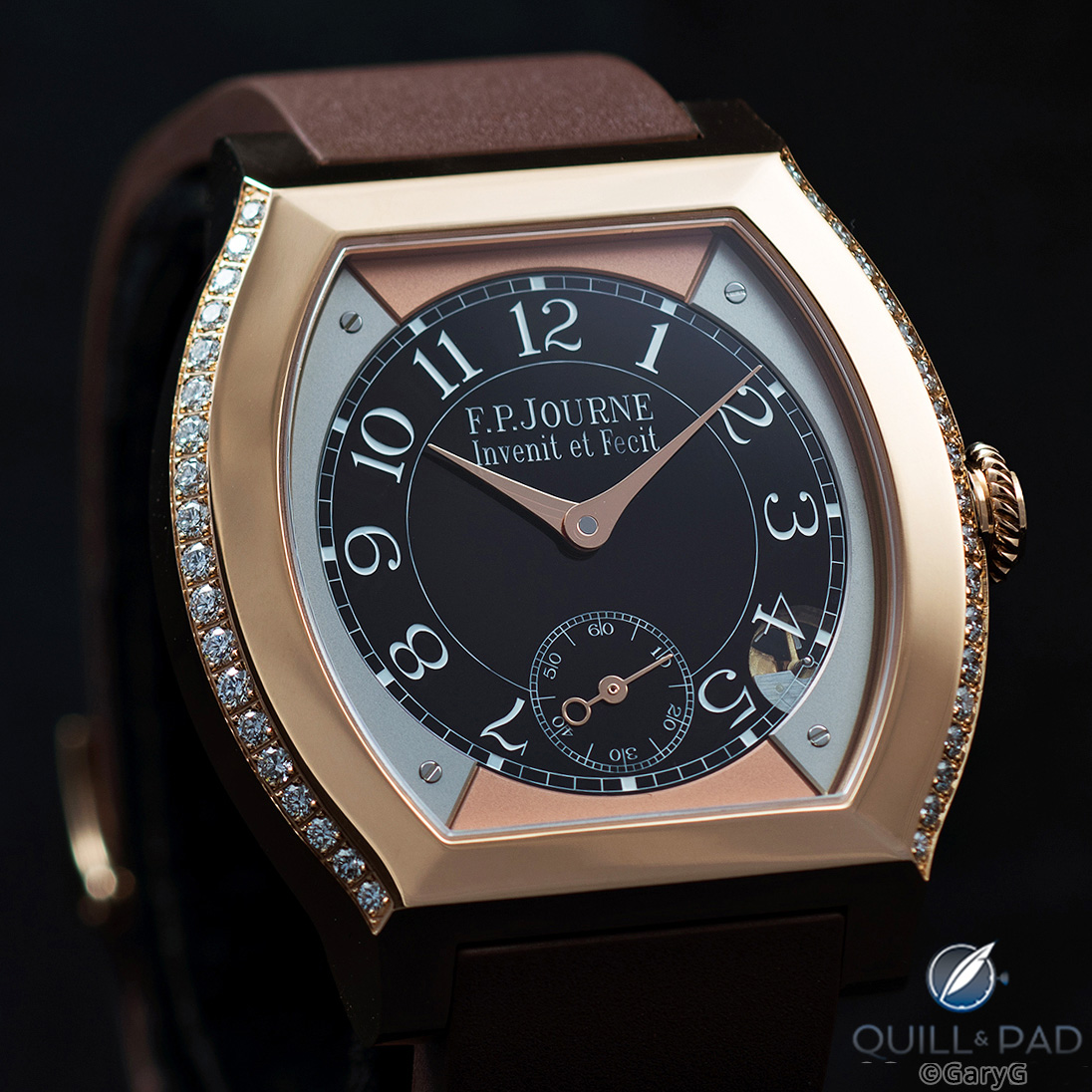
The “flat tortoise” case shape of the F.P. Journe Elégante
The design category overlaps a bit with form, but here I’ll focus on traditional (that is, mostly round) pieces where careful attention has been given to creating visual interest. I could pretty much sit all day looking at the textures and shapes of my Patek Philippe Reference 5370’s platinum case (see Why I Bought It: Patek Philippe Reference 5370P).
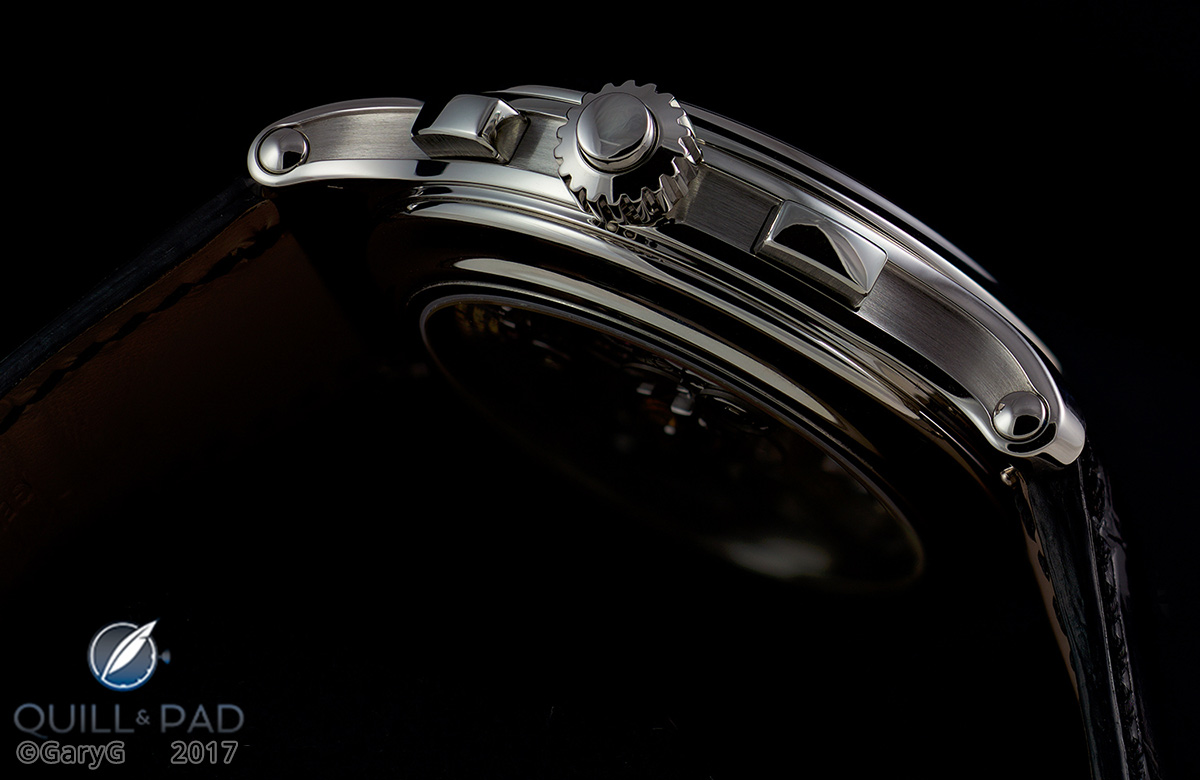
Case details, Patek Philippe Reference 5370P
Another favorite of mine in this category is the Upside Down from Ludovic Ballouard: everything from the organic curves of the case and integral lugs to the crown guard and deeply engraved crown makes sense to me. And, as a bonus, the concave sides of the case provide the viewer with an “upside down” image of him- or herself when viewed directly (see Why I Bought It: Ludovic Ballouard Upside Down).
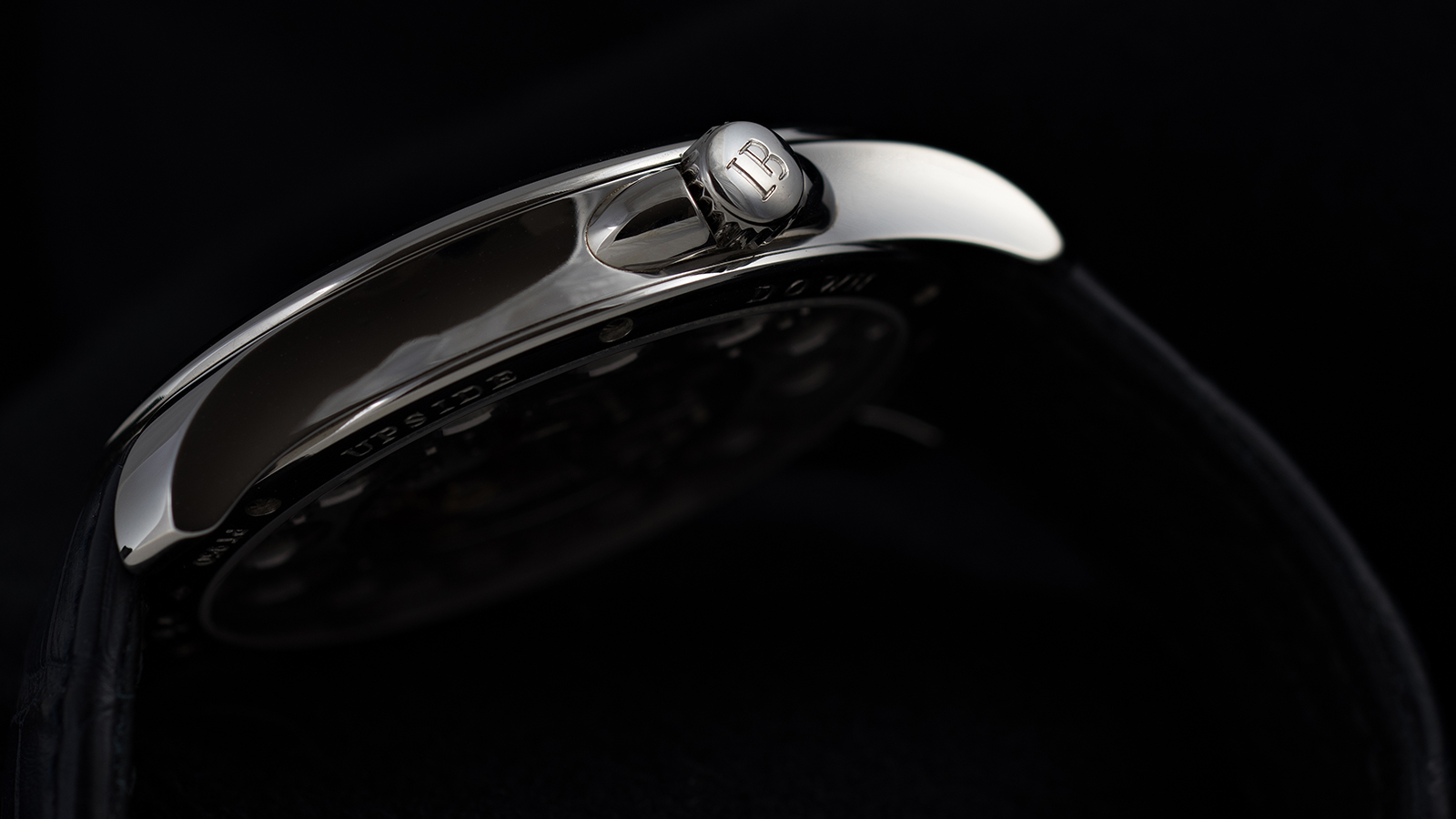
Case-edge view, Ludovic Ballouard Upside Down
And somewhere on the edge between form and design are the fascinating watches of Stepan Sarpaneva, whose distinctive case shapes make for a major element of their appeal.
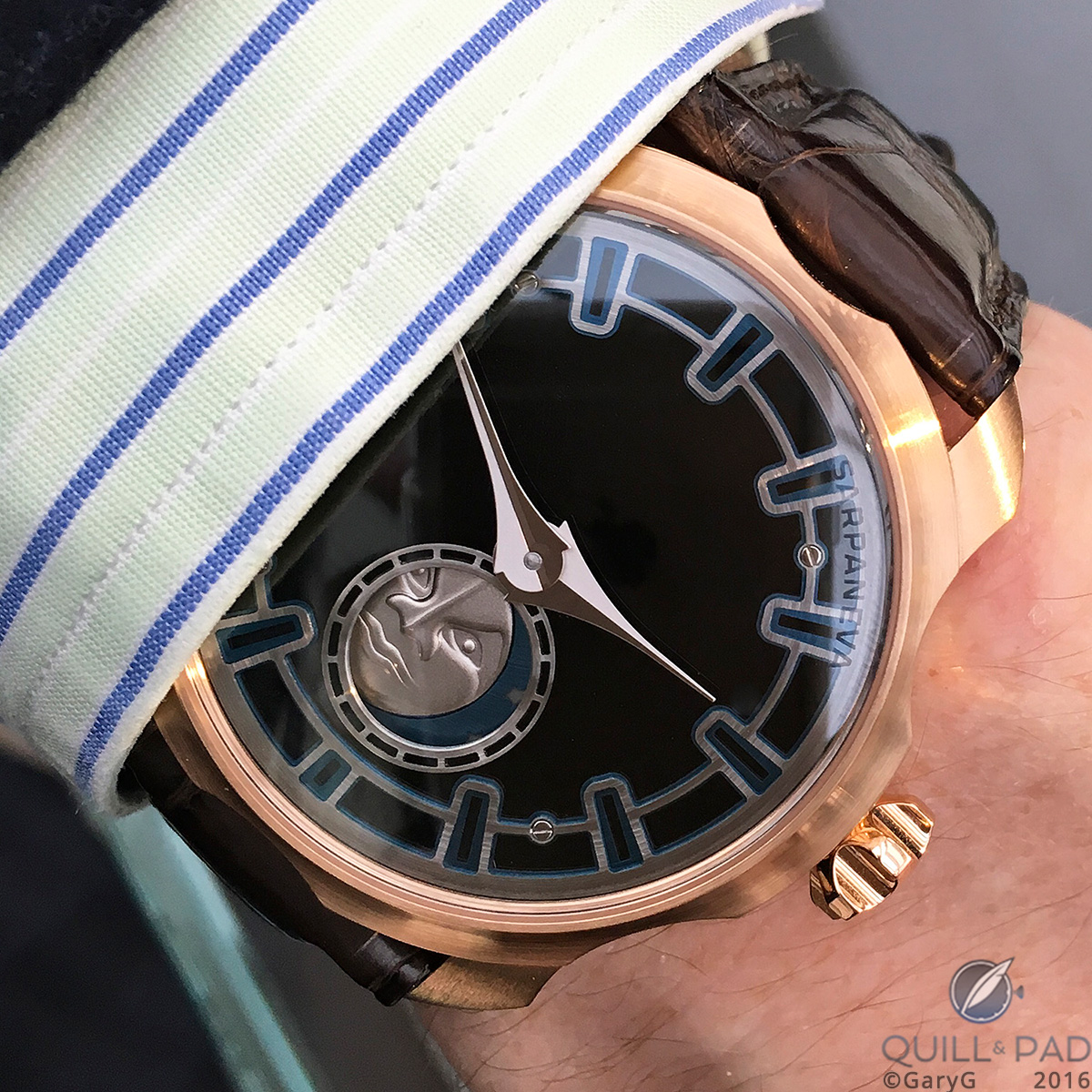
Stepan Sarpaneva Korona with pink gold case and black enamel dial
Fabrication is about how it’s made and the materials from which it’s made. While I could easily have placed Vianney Halter’s Antiqua in either of the prior categories, for me it fits most naturally here with its riot of rivets, bezels, and golden balconies supporting the overhanging dials (see Why I Bought It: Vianney Halter Antiqua).
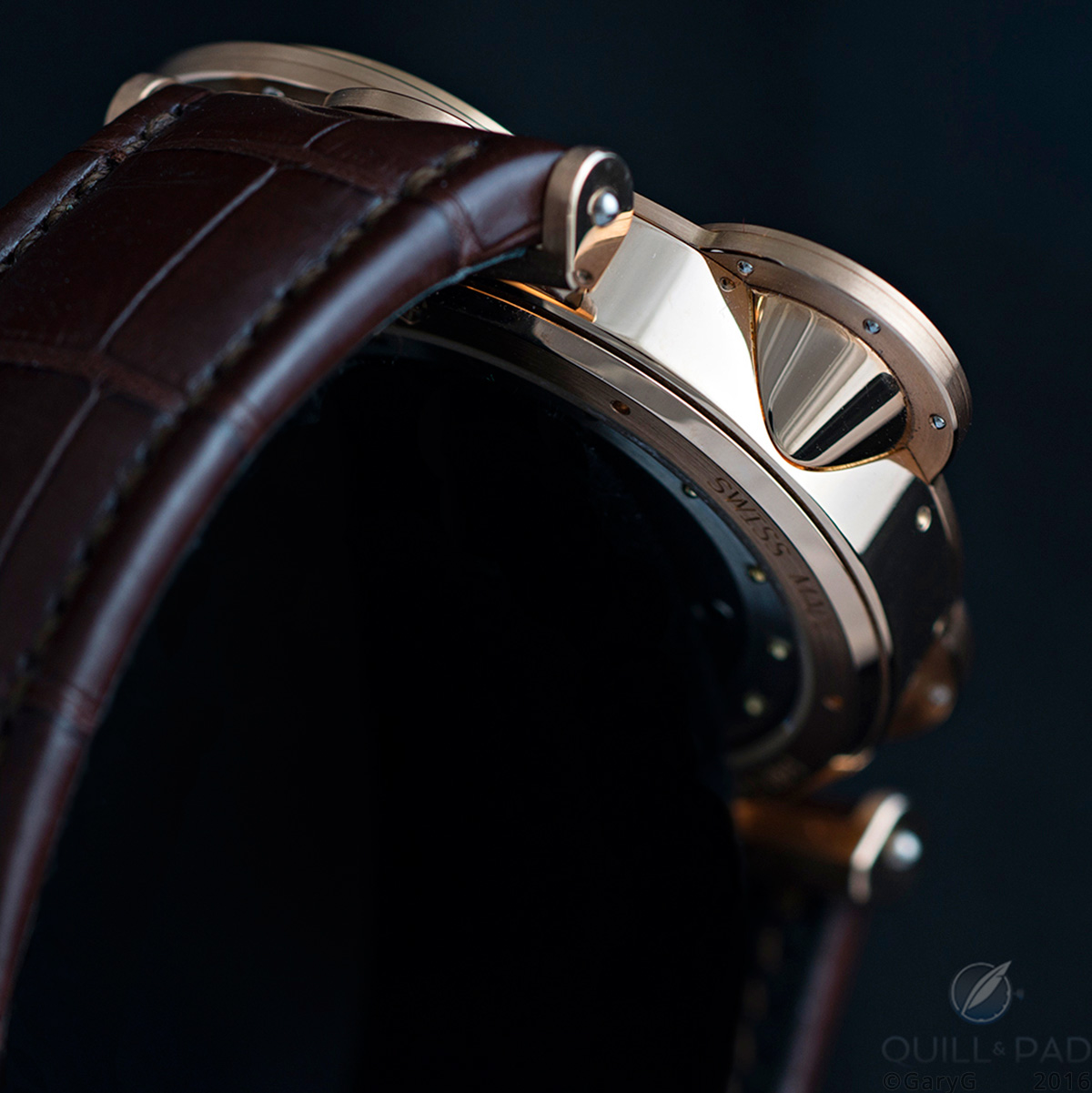
Gorgeous fabrication of the Vianney Halter Antiqua
Halter’s most recent watch, the Deep Space Tourbillon, is also a marvel of complex fabrication, and is made from ultra-light titanium to boot (see Why I Bought It: Vianney Halter Deep Space Tourbillon).
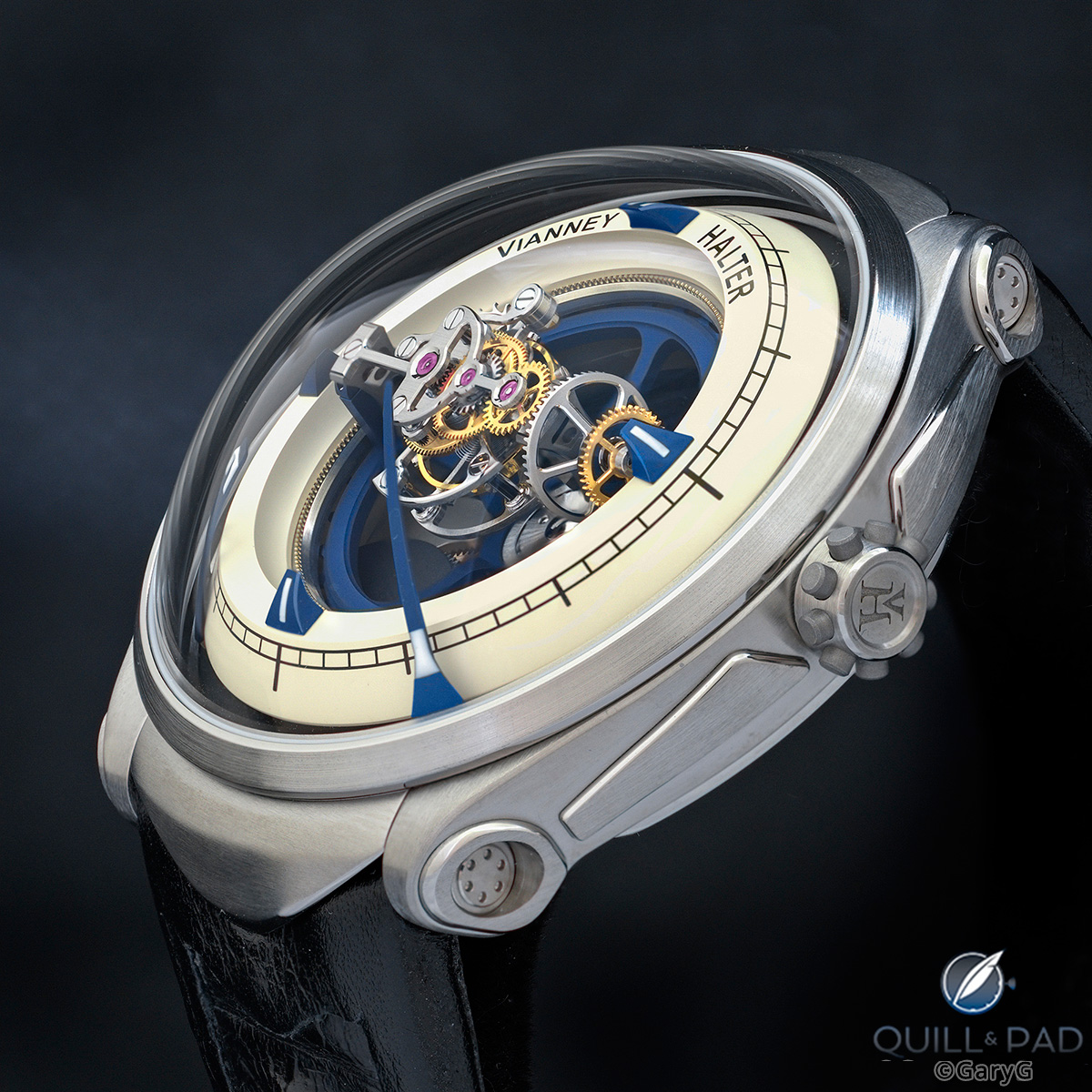
Complex titanium case of the Vianney Halter Deep Space Tourbillon
Kari Voutilainen’s cases are also remarkable, not only for their lovely proportions and teardrop lugs, but for the classic sophistication of their construction. For me this is particularly true of the early cases made for Voutilainen by Gideon Levingston that were fabricated from gold sheets and wires rather than being stamped and formed.
In the photo below of a good friend’s Voutilainen Masterpiece 8 Decimal Repeater, you can clearly see the vertical joining line where it was welded at the bottom of the case.
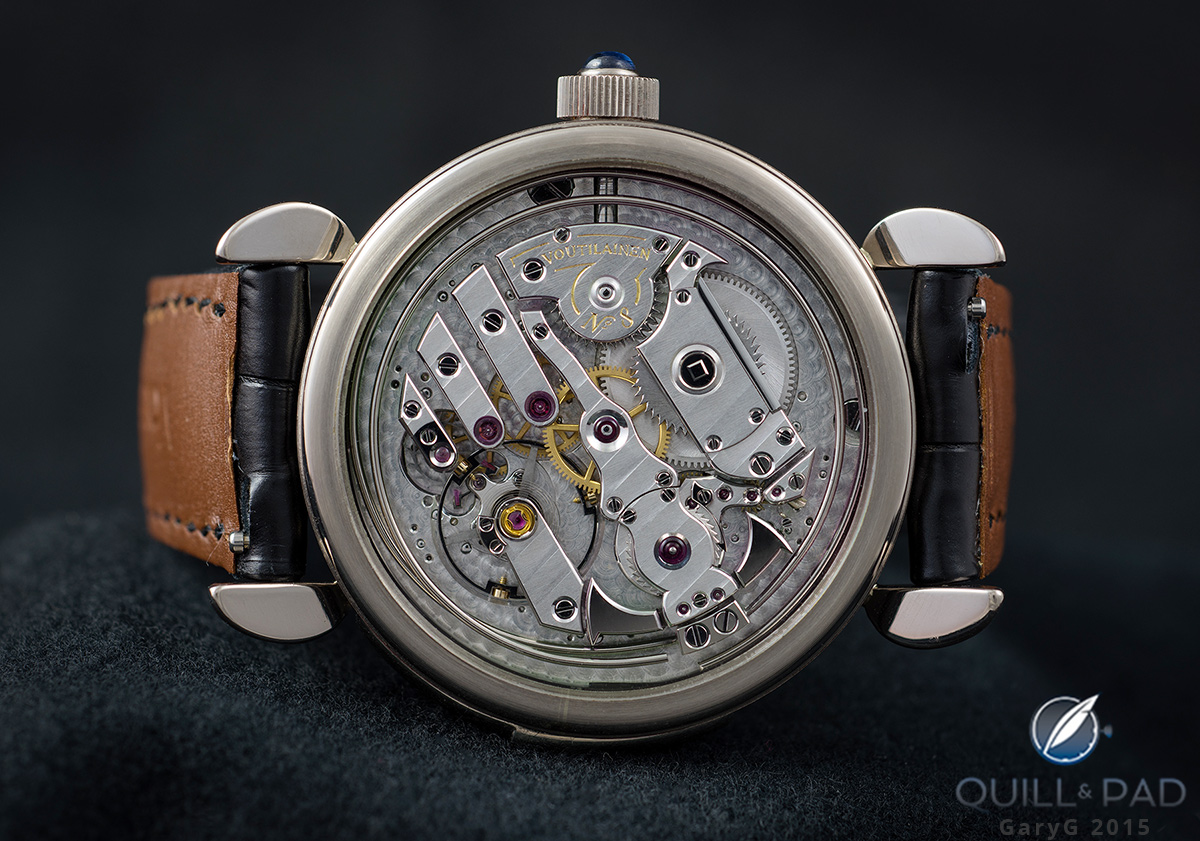
Handmade: Masterpiece 8 by Kari Voutilainen
At F.P. Journe, the emphasis is on lightness: if you’ve ever had the chance to wear a platinum A. Lange & Söhne Double Split and then swap it out for a platinum watch by Journe, you’d swear that they couldn’t possibly have been made from the same metal.
When I visited the Journe case factory last year, I learned that Journe’s cases are so delicate that it’s necessary to weld a small supplemental brace within them to support the loads on the winding stem.
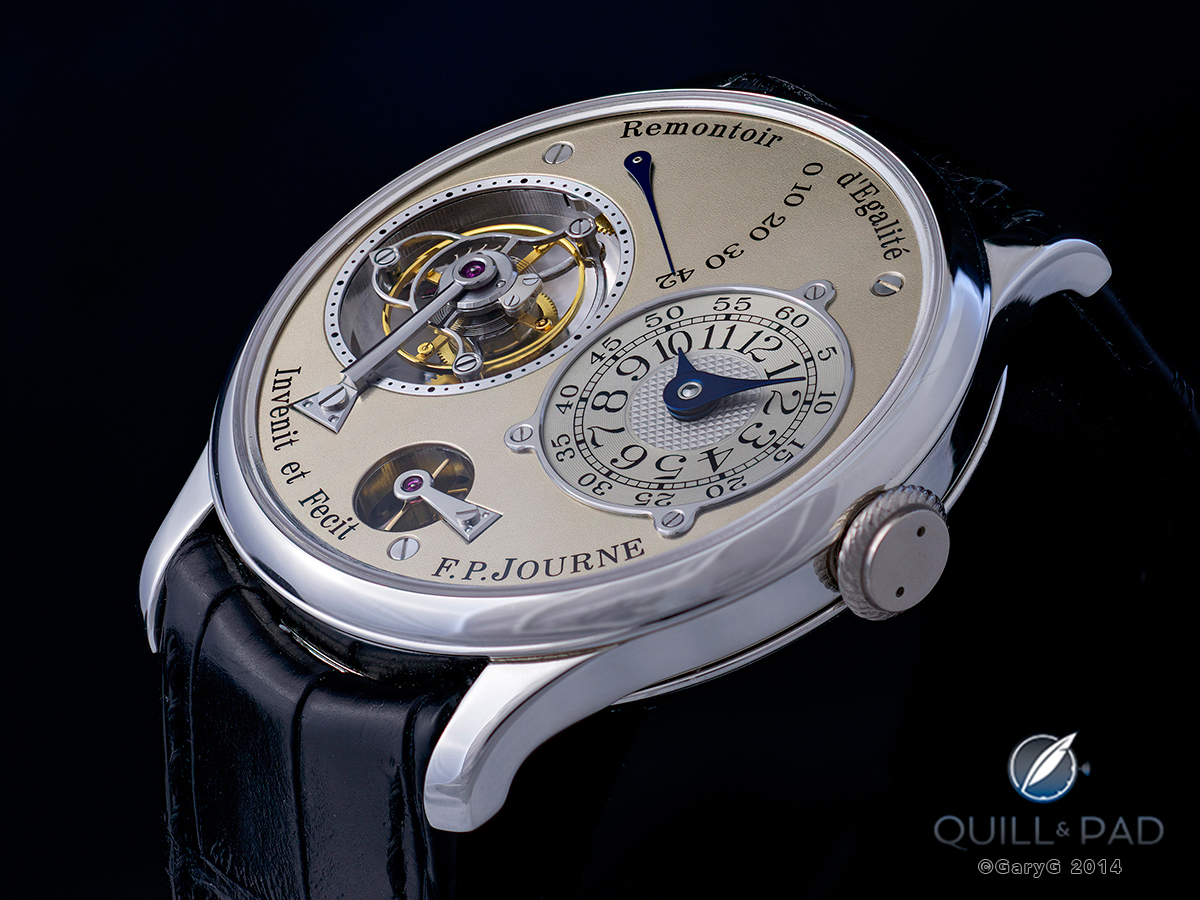
Focus on lightness: F.P. Journe Tourbillon Souverain in platinum
There are many watch cases that are designed around function; here, pieces such as the Rolex Sea-Dweller with its helium escape valve (for those of you who plan to take your summer vacation in a diving bell) come to mind.
In my collection, the “tool watch” functionality of case design is most directly reflected in my Omega Seamaster Ploprof, a watch designed with a “monobloc” case carved from a single steel block, screw-down crown with reinforced brace, and mono-directional rotating bezel controlled by a bright red locking button.
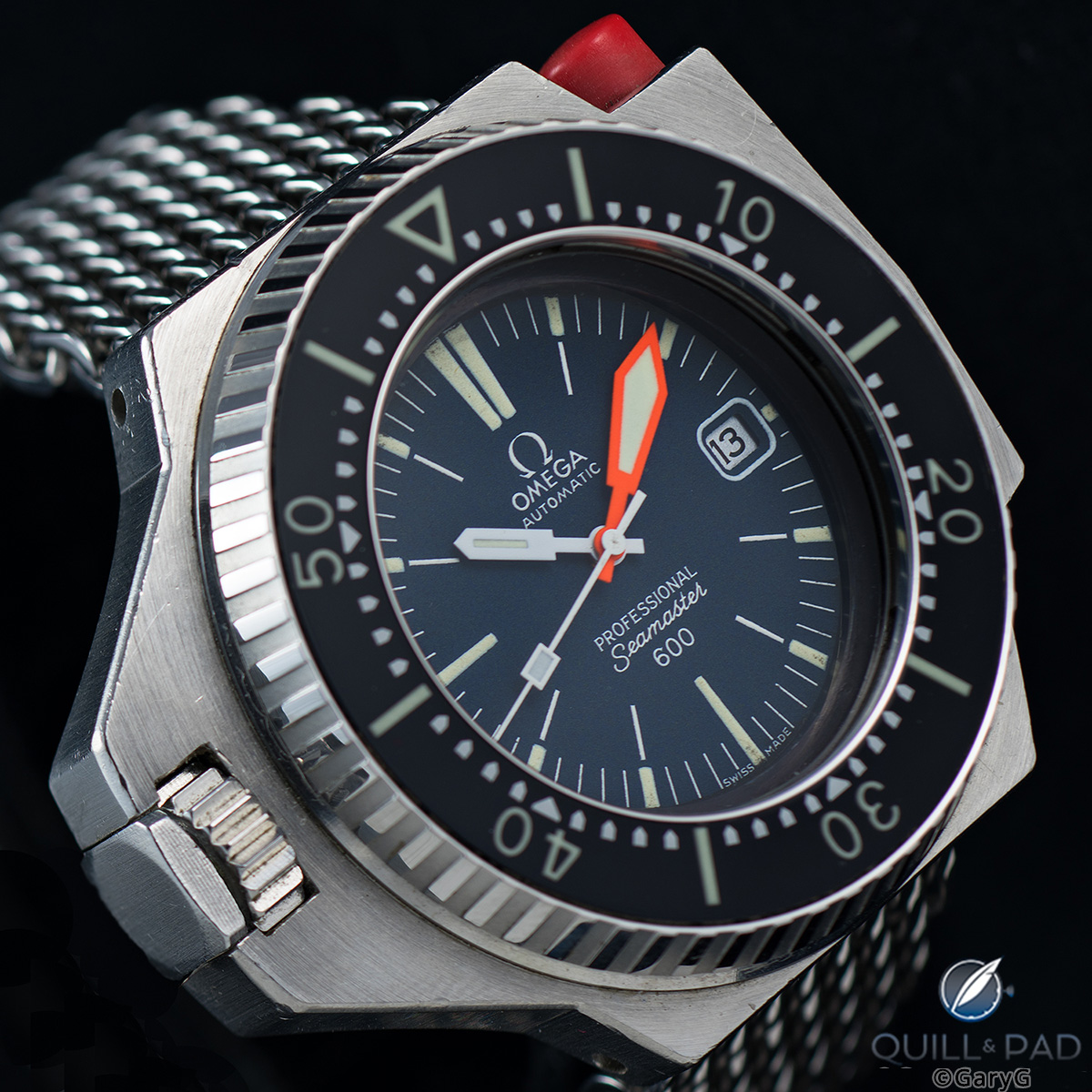
Form follows function: Omega Seamaster Ploprof 600m
Another functional case that also happens to have an interesting form is of course the Reverso by Jaeger-LeCoultre.
I smile every time I slide the central part of the case to the side, flip it over, and then snap it safely home in its cradle as the reverse side shows either another complication or a protective shield of metal (see Why I Bought It: Jaeger-LeCoultre Tribute To Reverso 1931).
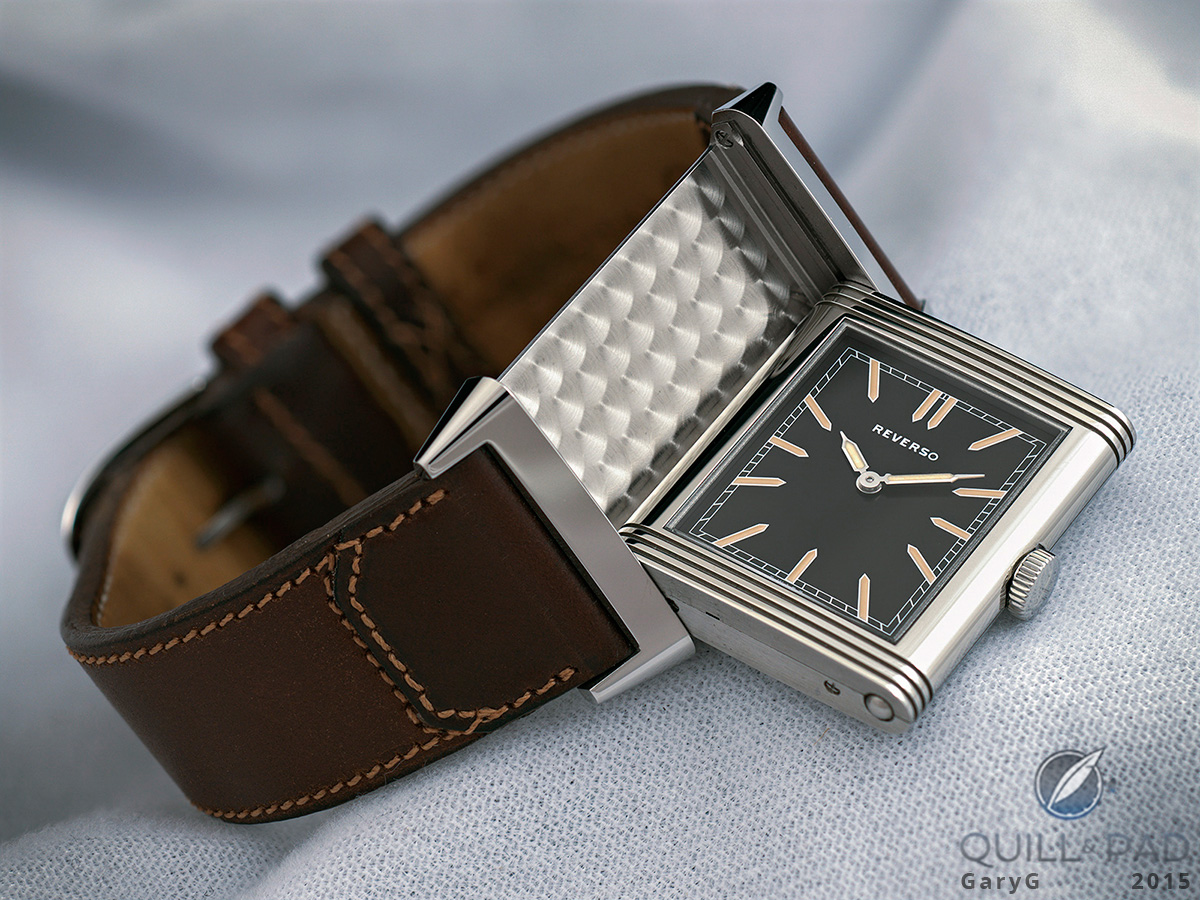
Functional beauty: Jaeger-LeCoultre Reverso Tribute to Reverso 1931 U.S. limited production, 2012
Another element of function is transmission of sound in chiming watches, which is a rich enough topic that it deserves to be left for another day.
So, let’s finish up by considering decoration.
While it seemed for a while that high-end case decoration in the style of the grand pocket watches might never return, in recent years we have seen a resurgence of case ornamentation, including stunning pieces from Romain Gauthier and Kari Voutialinen.
I’m fortunate enough to own a Voutilainen watch with a case back engraved by brilliant artist Eddy Jaquet (see if you can find Jaquet’s initials to the right of Chronos’s lower hand in the photo below). See Commissioning A Watch: My Journey With The Kari Voutilainen Masterpiece Chronograph II.
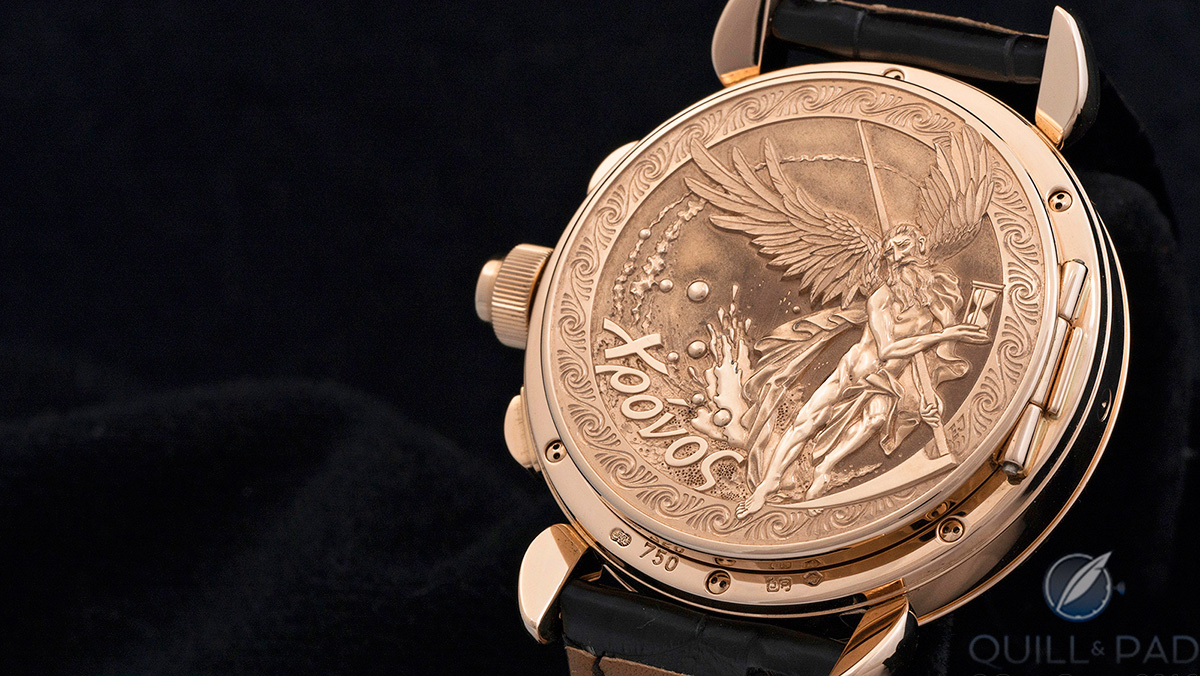
Case decoration returns: case back engraving by Eddy Jaquet, Kari Voutilainen Masterpiece Chronograph II
All of the above may help to explain why I was so strongly drawn to the F.P. Journe Anniversary Tourbillon T30 when it appeared on the scene: its gold-and-silver case with officer back and cross-hatched engraving was like nothing I’d ever seen. And it was the perfect complement to the other elements of a piece created to mirror the design of Journe’s very first tourbillon pocket watch.
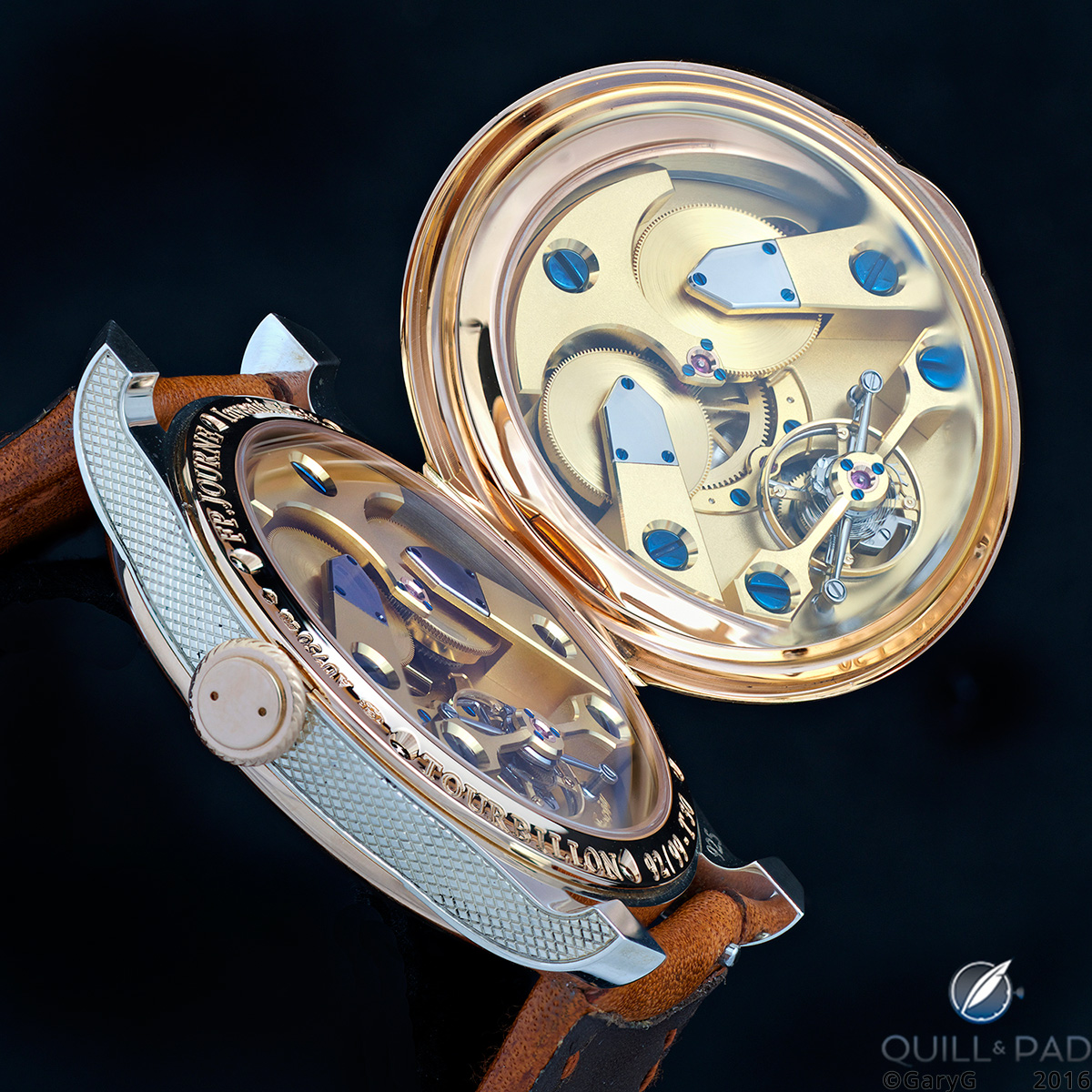
Gold and silver: unique case design, F.P. Journe Anniversary Tourbillon T30
Has case shape, design, fabrication, function, or decoration ever played a major role in your purchase of a watch?
If so, I’d love to hear about it in the comments section below. If it hasn’t, next time you’re watch shopping you might consider giving just a little more attention to this under-appreciated aspect of the watches we all love.

